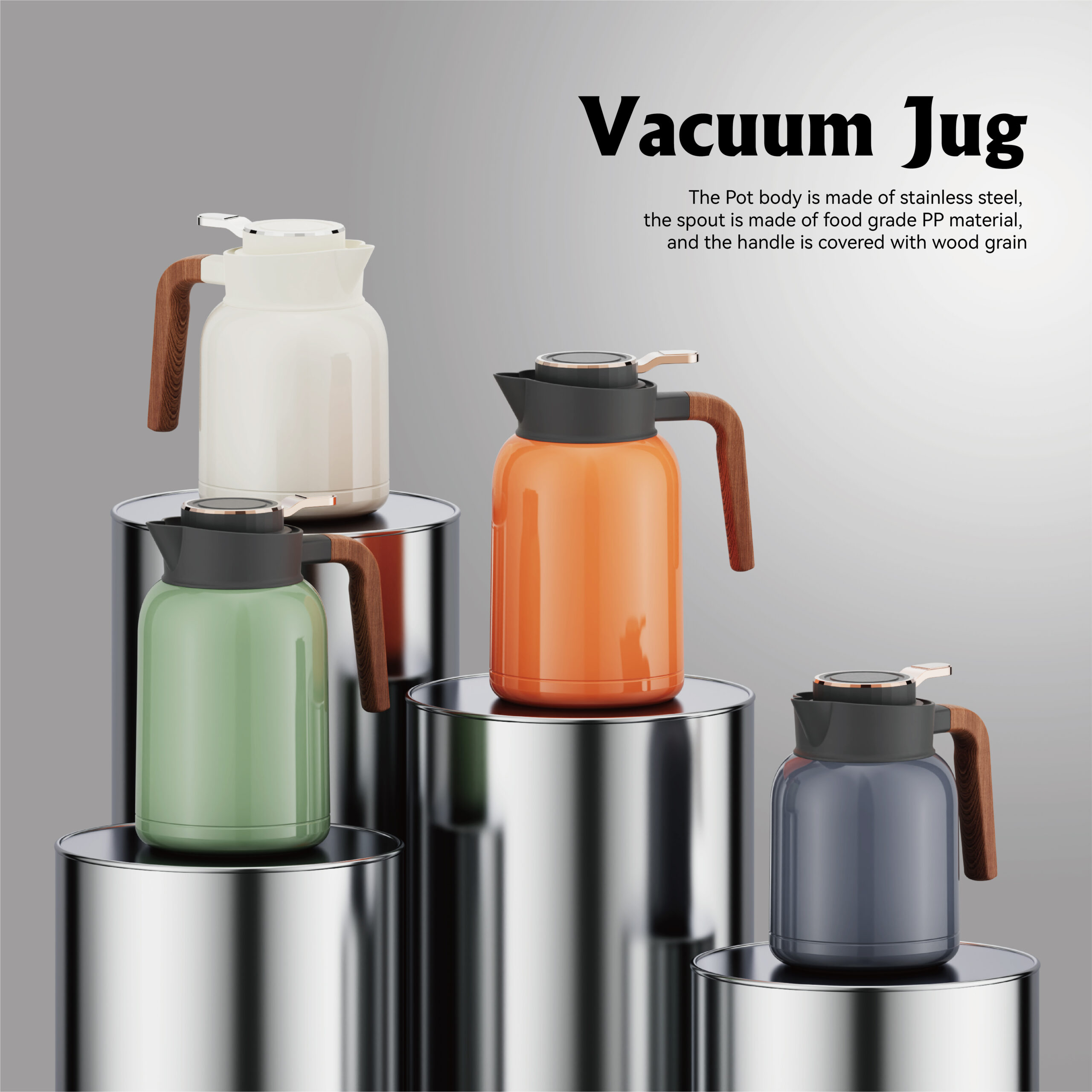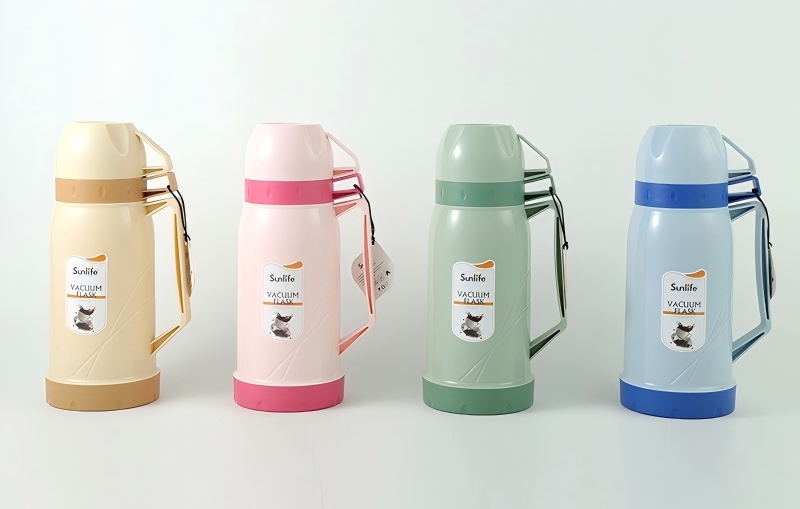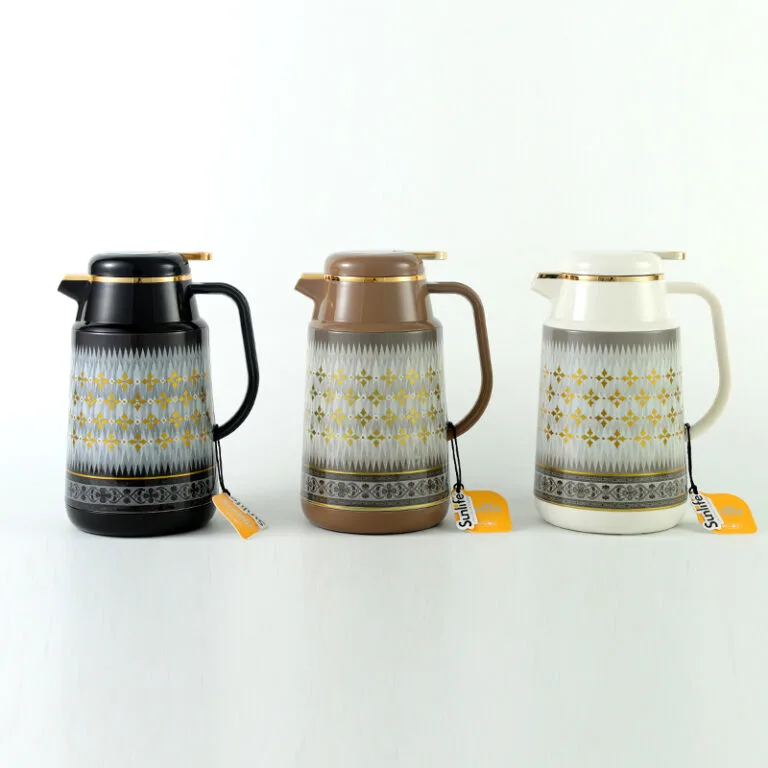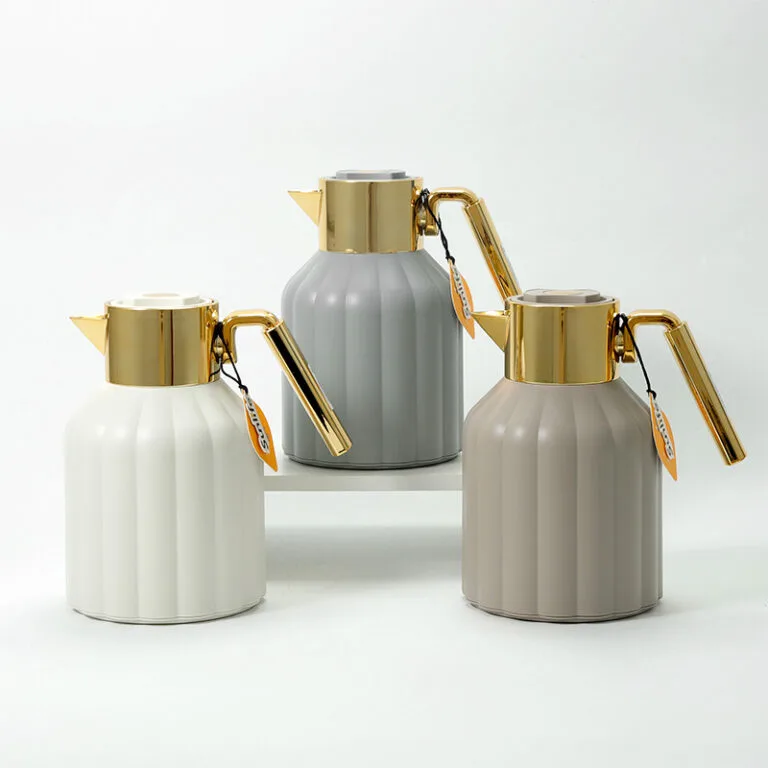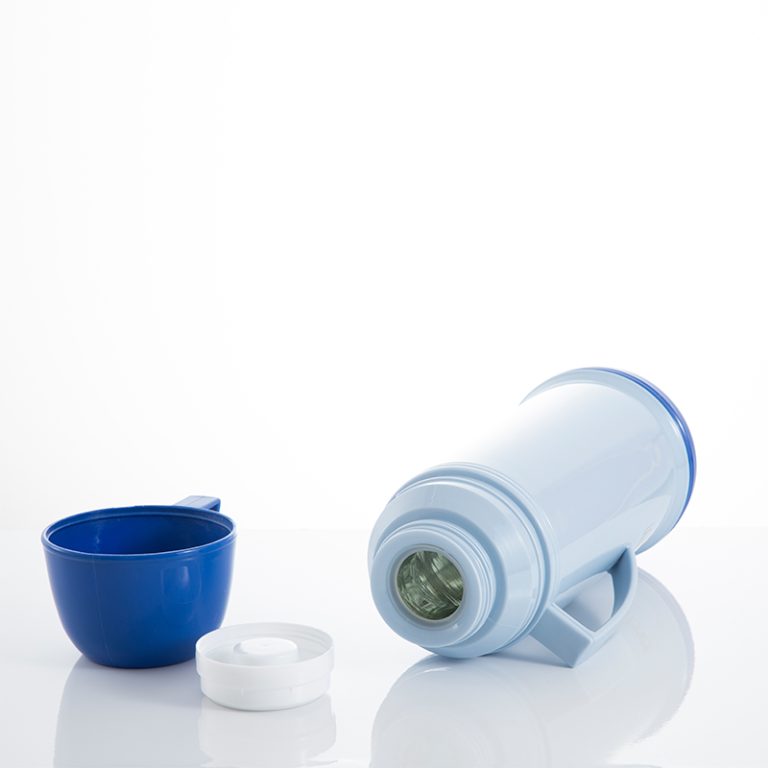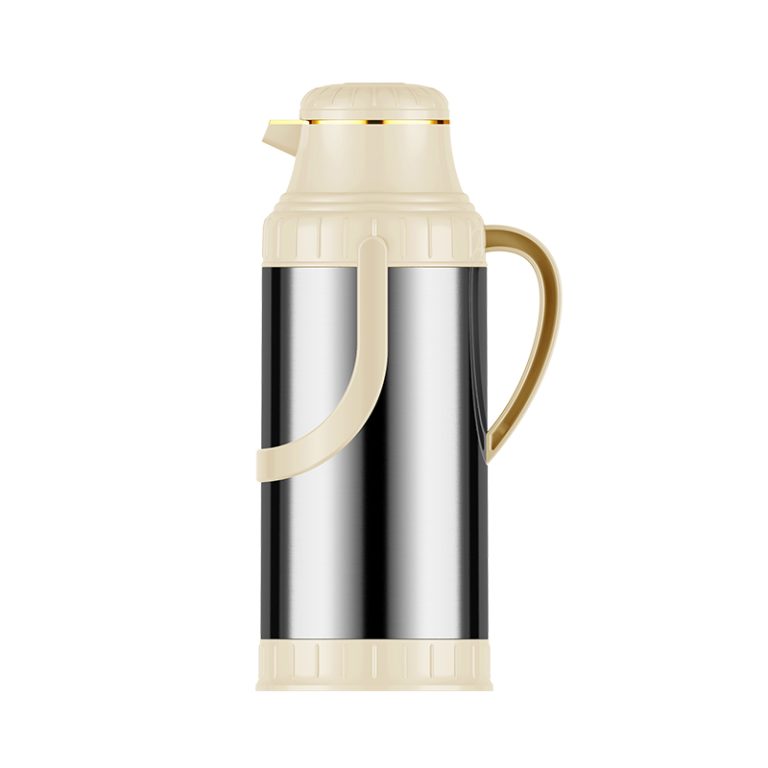Picture this: you’re in the store, eyeing vacuum flasks, trying to decide which one won’t fail you on a frosty morning hike or during a marathon work session. You know, those moments when you need your coffee hot or your water ice-cold. The choice often comes down to plastic body versus metal body vacuum flasks. It’s not just about style—it’s about what fits your life. Let’s break it down with real talk, weighing the good and the bad, so you can pick the one that feels right. No nonsense, just insights from someone who’s fumbled enough flasks to learn a thing or two.
What Exactly is a Vacuum Flask?
Before we dive in, let’s get clear. A vacuum flask keeps your drinks hot or cold for hours. It’s not just a fancy bottle—it uses a double-wall design with a vacuum layer to block heat from sneaking in or out. Pretty cool science for something so simple.
These flasks have been around forever, but today’s models are slicker and built for specific needs. Whether you’re pouring tea for a family picnic or packing iced water for a beach trip, the material—plastic or metal—makes a big difference. I’ve got pals who love their scratched-up metal flasks from rugged camping trips, while others stick to lightweight plastic ones that don’t weigh down their bags. So, which one’s your match? Let’s find out.
The Case for Plastic Body Vacuum Flasks
Plastic body vacuum flasks are super common, and it’s easy to see why. They’re usually made from tough polypropylene (PP) or other food-safe plastics, often with a glass liner inside for killer insulation. You’ve seen them—those bright, colorful flasks lining store shelves. They come in sizes from 1.0L to 1.8L, perfect for all sorts of uses.
Why Plastic Shines in Everyday Use
Light as a feather. A 1.0L plastic flask weighs about 0.7-0.8 kg. It’s a breeze to toss in a kid’s lunchbox or gym bag. I once hauled a heavy metal flask to a picnic—big mistake. Plastic keeps things easy.
Wallet-friendly. These are budget champs. You can grab a solid plastic body vacuum flask for less than $10 in bulk, and even retail prices beat metal ones. More cash for coffee beans, right?
Solid insulation. Thanks to the glass liner, they keep drinks hot or cold for 12-24 hours. Industry tests show plastic flasks with glass refills hold water above 60°C for over 12 hours if you warm them up first.
No rust, fewer dents. Drop it on the kitchen tile? It might get a scratch, but it won’t bend like metal. Plus, they’re rust-proof, which is a win in humid climates.
Custom vibes. Want a flask that screams you? Plastic makes it easy—pick any color, add a logo, or slap on a fun pattern. It’s a branding dream without the hefty price tag.
Where Plastic Falls Short
Nothing’s perfect, though. Plastic can scratch up over time, and cheaper ones might hold onto odors like yesterday’s soup. Pouring in boiling-hot liquid? Not the best idea—extreme heat can warp the body. And while they’re sturdy, they’re not bulletproof. I cracked one after a bad tumble on pavement. Still, for home, office, or light travel, they’re a great pick.
From factory tours and user chats, plastic body vacuum flasks are a hit in homes and offices where portability beats ruggedness. Take the Sunlife 1000ml flask—food-grade PP, keeps drinks hot, and has a comfy handle for pouring. It’s a bestseller in places like the Middle East and Southeast Asia for a reason.
Why Go for Metal Body Vacuum Flasks?
Now, let’s talk metal body vacuum flasks. These are usually stainless steel or iron-bodied, with double walls for top-notch vacuum insulation. They’re the heavy-duty champs, built to take a beating and keep on pouring.
Why Metal’s a Tough Contender
Built to last. Stainless steel laughs off dents, scratches, and rust. Drop it off a table? It’ll shrug it off. My buddy uses his metal flask on construction sites—it’s survived drops that would’ve crushed plastic.
Next-level insulation. Double-wall stainless steel often outperforms plastic, holding heat for 24+ hours in high-end models. A 1.0L metal jug can keep your coffee steaming from breakfast to your evening commute.
Premium feel. Metal looks sharp—polished finishes, sleek lines. It’s the kind of flask you’d proudly set on your desk or pull out on a hike. It just feels fancy.
Eco-friendly edge. Metal flasks last longer, often 2-3 years more than plastic, per industry data. That means less waste over time, which is a win for the planet.
Metal’s Downsides
But there’s a catch. Metal flasks cost more—sometimes twice as much as plastic. They’re heavier, too, clocking in at 1-1.2 kg for a 1.0L size. Not ideal for long treks. Iron-bodied ones? Watch for rust if the coating chips. Also, they can get toasty to the touch with super-hot liquids, unlike plastic’s insulated handles.
Metal body vacuum flasks are your go-to for outdoor adventures or high-traffic spots. Think camping, where an iron-body coffee pot keeps your brew warm by the fire. Or a busy kitchen, where a stainless steel jug handles the chaos like a pro.
Head-to-Head: Plastic vs. Metal
Let’s lay it out plainly. Here’s a quick comparison based on specs from trusted suppliers:
| Feature | Plastic Body Vacuum Flask | Metal Body Vacuum Flask |
| Weight | Super light (0.7-0.8 kg for 1.0L) | Heavier (1-1.2 kg for 1.0L) |
| Durability | Decent for daily use; scratches but no dents | Rock-solid; resists dents and rust |
| Insulation Time | 12-24 hours | 24+ hours in top models |
| Cost | Easy on the wallet ($5-15 retail) | Pricier ($15-30 retail) |
| Customization | Tons of colors, logos, patterns | Mostly engravings or finishes |
| Best For | Home, office, short trips | Camping, heavy-duty use |
See the vibe? Plastic’s great for saving cash and keeping things light. Metal’s your pick for toughness and long-term use.
What to Think About Before You Buy
Don’t just grab the shiniest flask. Match it to your life. Daily commuter? Plastic’s light and cheap. Hardcore camper? Metal’s durability is worth the splurge.
Size matters, too. A 1.0L flask is perfect for one person; 1.8L works for families. Materials? Stick to food-grade PP for plastic or 304 stainless steel for metal to keep things safe.
Care tips: Plastic flasks just need a quick soap rinse. Metal? Skip the dishwasher if it’s coated. Pro move? Test insulation by pouring in hot water and checking the temp after a few hours. Saves you from buyer’s remorse.
One random tip: if you’re a klutz like me, go for a flask with a non-slip base. I’ve dodged a few spills that way.
Real-Life Stories from Users
Imagine a mom packing school lunches. She grabs a plastic body vacuum flask—light, colorful, and kid-approved. It keeps soup warm till lunch, no drama.
Now picture a truck driver. His metal flask rattles around the cab all day but still delivers hot coffee at every stop. Yeah, it’s heavier, but it’s a tank.
Or think about office folks in hot climates. Plastic flasks with glass liners keep water icy without the sweaty condensation metal sometimes gets. Sales data from Africa and Southeast Asia shows plastic outselling metal 2:1 in homes—people want ease over indestructibility.
Honestly, I sometimes wish I could have both. Plastic for quick errands, metal for weekend getaways. But my wallet’s like, “Pick one, buddy.”
Introducing Zhejiang WeiLai Daily Necessities Co., Ltd: Your Go-To Plastic Body Vacuum Flask Supplier
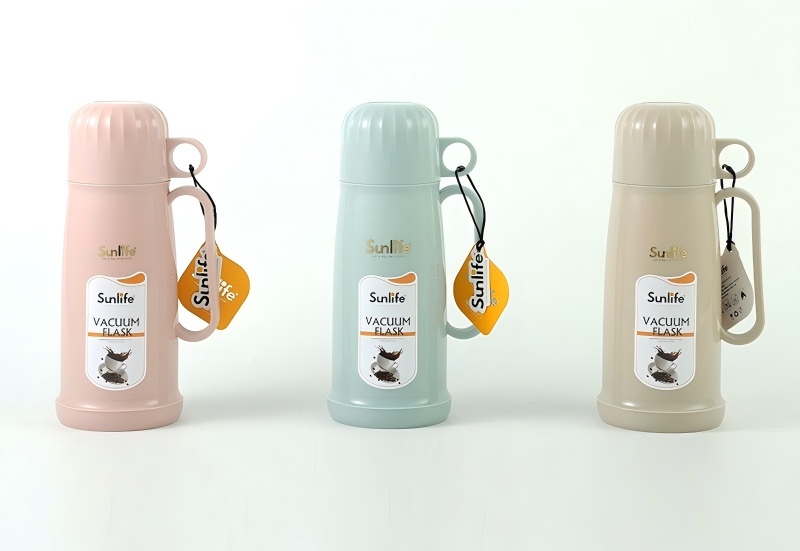
If plastic body vacuum flasks sound like your jam, let me point you to Zhejiang WeiLai Daily Necessities Co., Ltd. They’re based in Yiwu, China—the small-commodity capital of the world. Since 1996, they’ve been crafting over 300 products, including stellar plastic body flasks under brands like Sunlife. With two warehouses packed with 200+ ready-to-ship items, they can deliver in 3-5 days. They’ve got over 100 patents, ship to 100+ countries, and love customization—think colors, logos, or patterns. Their food-grade PP flasks with glass liners offer great insulation at a price that won’t sting. It’s quality you can count on, backed by a team all about fresh ideas.
Conclusion
So, plastic body vs. metal body vacuum flask—what’s your pick? It’s all about your routine. Plastic’s cheap, light, and perfect for everyday sipping. Metal’s tough, long-lasting, and ready for adventure. Both keep your drinks just right, but choosing based on weight, cost, and how you’ll use it means no regrets. Grab a flask that fits your vibe, and enjoy your coffee or water exactly how you like it.
FAQs
What’s the big difference between a plastic body and metal body vacuum flask?
It’s all about the build. Plastic body vacuum flasks are light and affordable, often with glass liners for insulation. They’re great for casual use. Metal ones, like stainless steel, are tougher and hold heat longer but cost more and weigh more. Think about where you’ll use it—plastic for home, metal for rugged stuff.
How long do plastic body vacuum flasks keep drinks hot compared to metal?
A good plastic body vacuum flask holds heat for 12-24 hours, especially if you pre-heat it. Metal ones, particularly double-wall stainless steel, can go beyond 24 hours. I’ve tested both, and they’re solid, but check yours in real-world conditions.
Is a metal body vacuum flask worth the extra bucks?
Depends on you. If you’re hard on your gear or travel a lot, metal’s durability saves cash over time. For desk sipping, a plastic body vacuum flask does the job for less. It’s about how you use it—sometimes cheaper is smarter.
Can I customize a plastic body vacuum flask for my business?
Totally. Suppliers often let you add logos, colors, or patterns on plastic flasks—way easier than metal. With minimum orders around 3600 pieces, it’s doable for bulk buys. It’s a great way to boost your brand without spending a fortune.
Which is greener: plastic or metal body vacuum flask?
Metal lasts longer, so it’s slightly better for the planet—fewer replacements. But quality plastic body vacuum flasks are recyclable and use safe materials. Either way, going reusable beats single-use bottles. Pick one and help cut waste.

